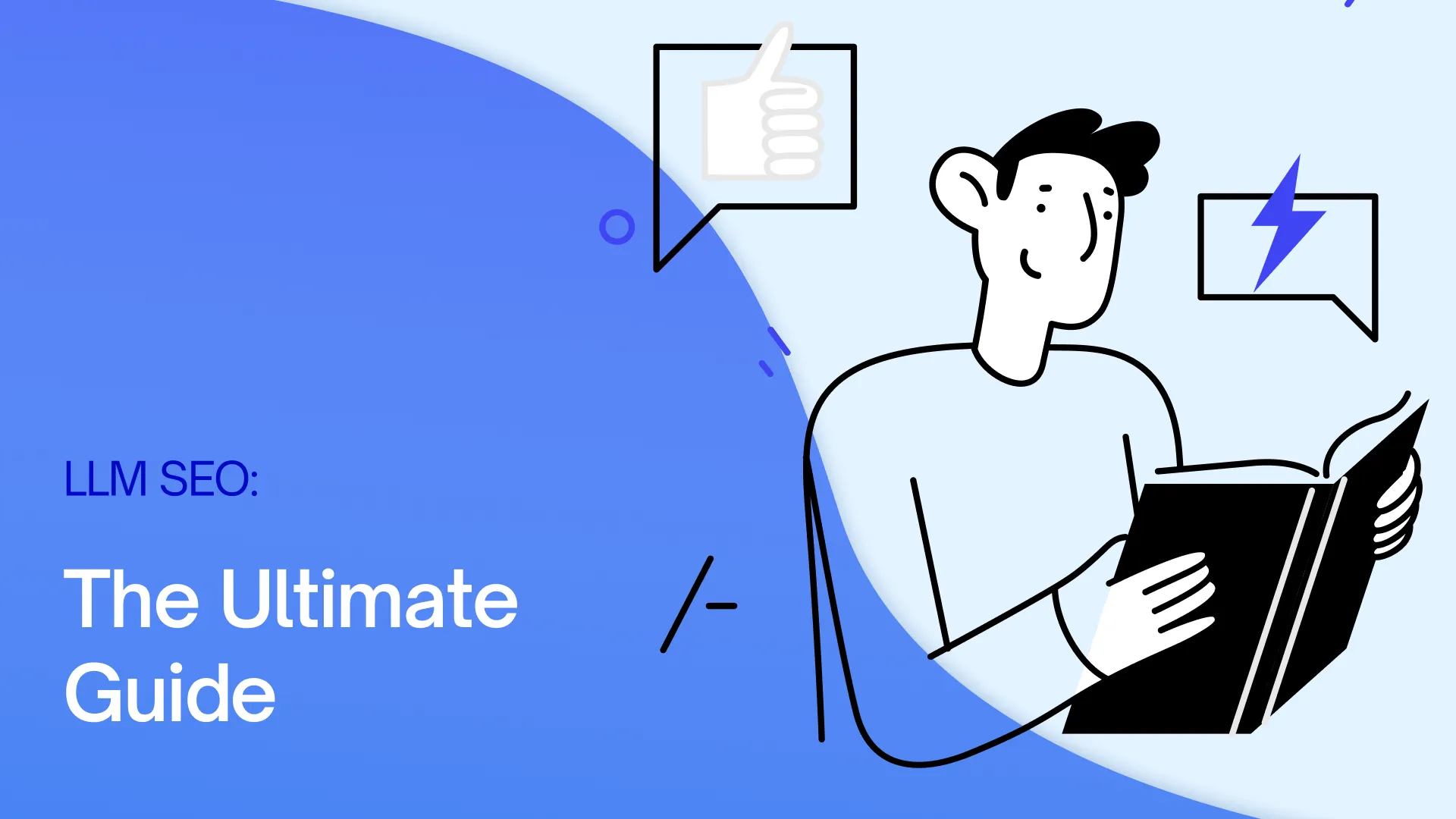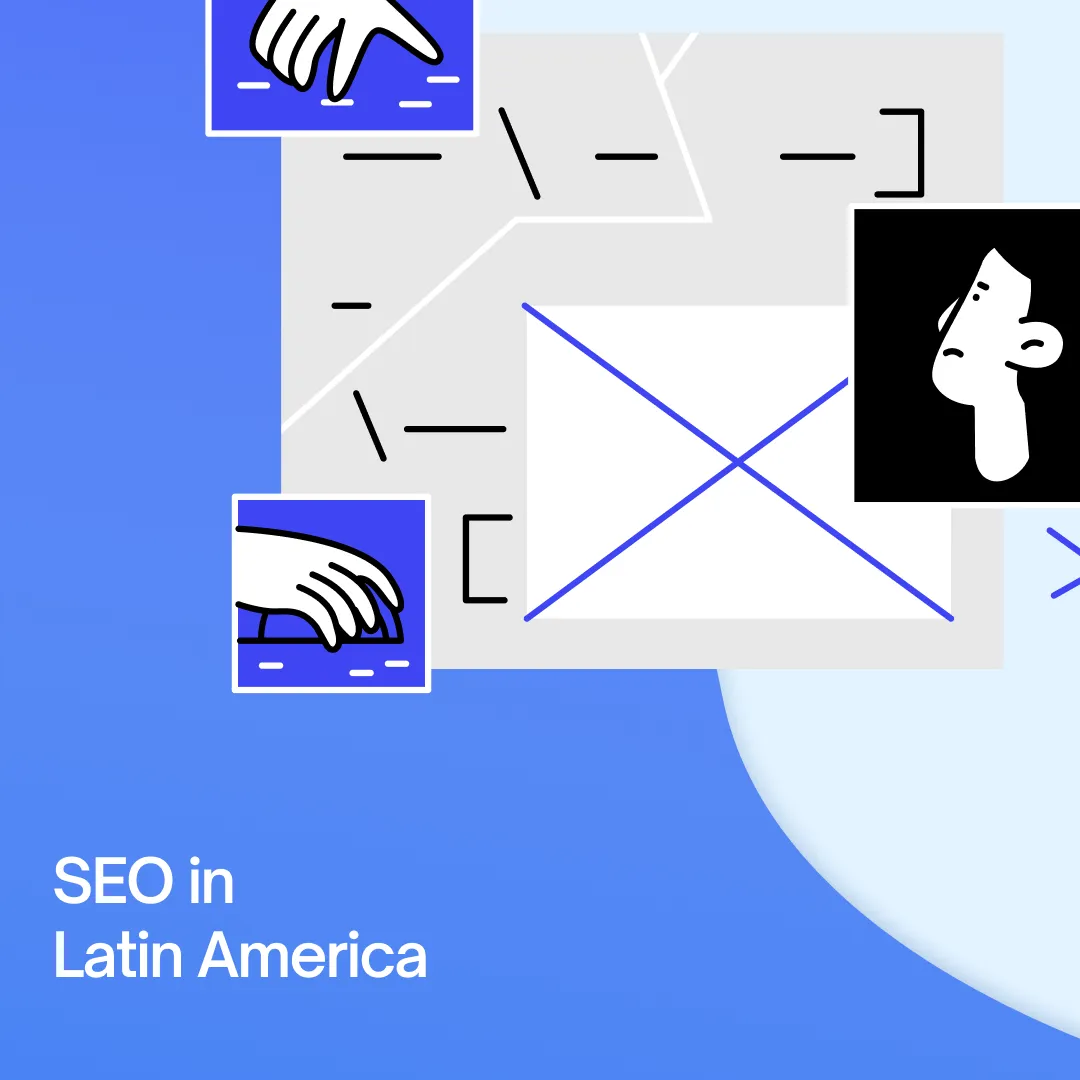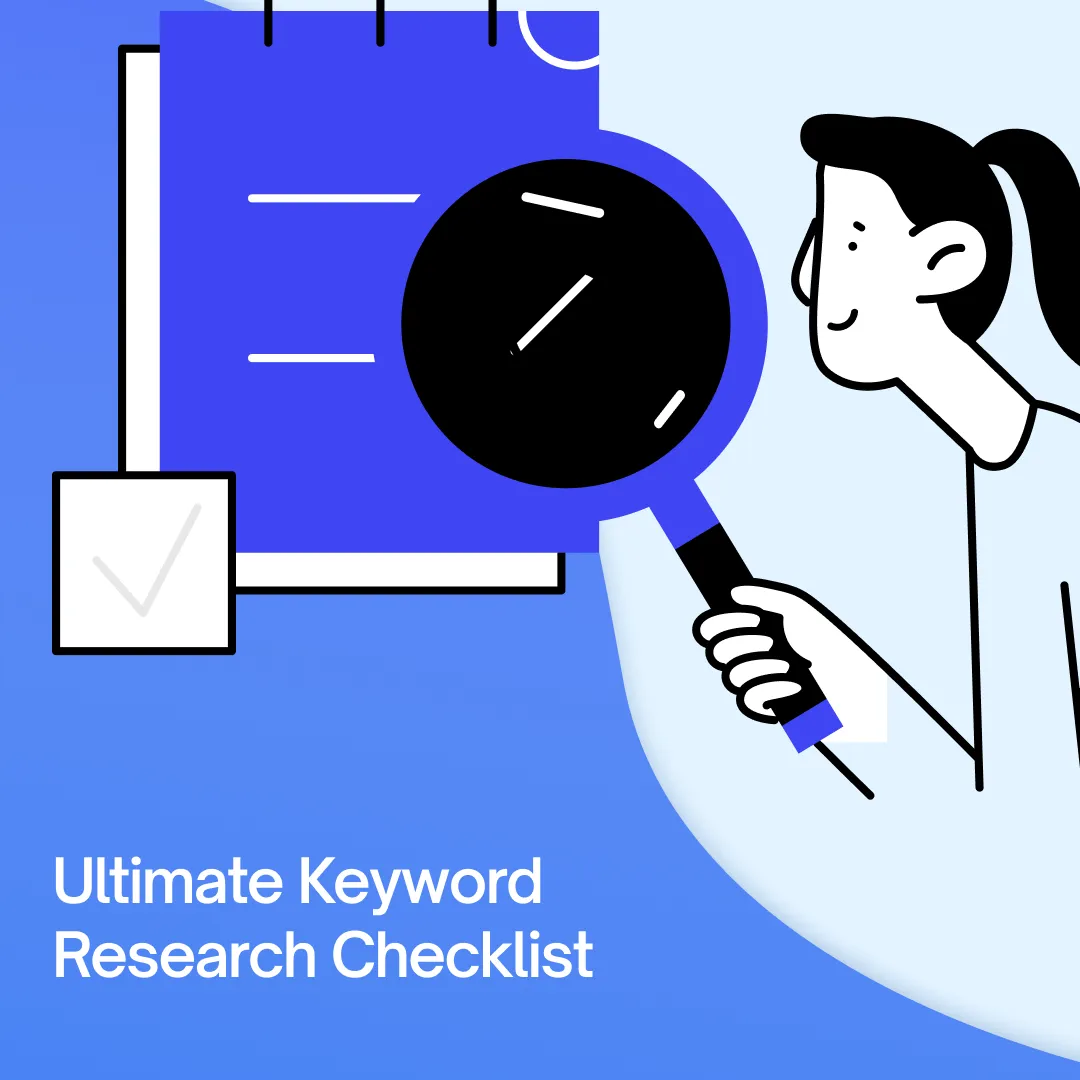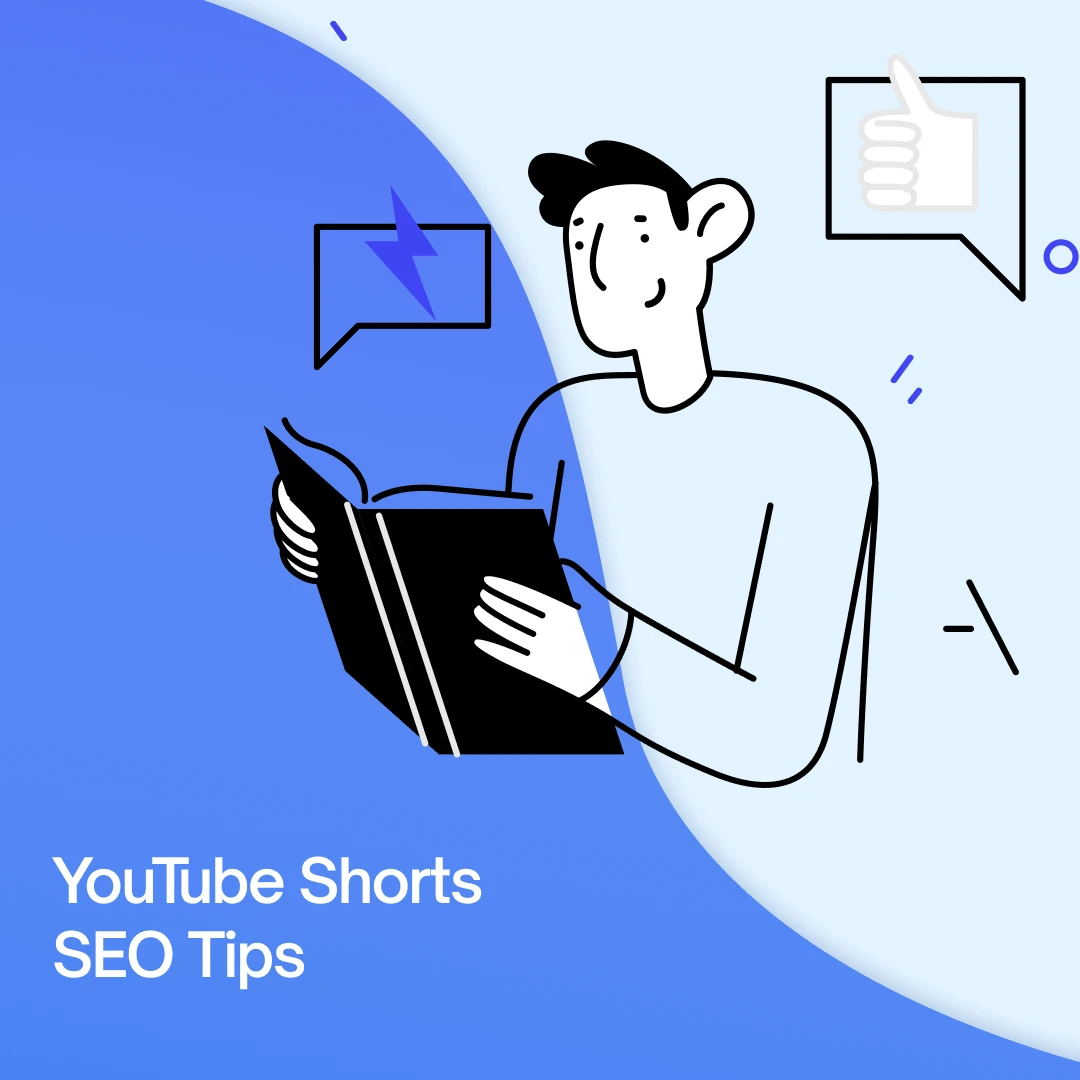Large Language Models (LLMs) are quietly rewriting how search works.
Every query, summary, and recommendation now passes through AI systems trained to decide what’s worth showing, and what’s not.
That changes everything about visibility. Keywords, single-page optimization, and word count still matter, but they don’t define success anymore. Your visibility now depends on how clearly AI systems understand, cite, and trust your brand.
According to Semrush, AI-driven search could become a major traffic and revenue source by 2027. Meanwhile, the AI search engine market is expected to hit $108.8 billion by 2032, growing at a 14% CAGR.
Let’s break down how LLM SEO actually works with real examples from our clients, what’s changing in search, and how to position your brand to stay visible in 2025.
Are you ready?
P.S.: The shift is already here. If you’re still betting everything on Google rankings, you’re already behind. Schedule a call with Bluethings and let’s build the best SEO strategy together.
TL;DR
Here’s what matters now in the LLM era:
- LLM SEO adapts your content for AI-driven systems like ChatGPT, Gemini, and Google’s AI Overviews.
- Visibility now depends on how often these models reference or cite your content.
- Success relies on entity-based optimization, structured data, and semantic clarity.
- AI-generated answers favor trustworthy, concise, and up-to-date content.
- Brands already optimizing for AI summarization are seeing stronger visibility and higher conversion rates.
What Is LLM SEO?
For starters, LLM SEO stands for Large Language Model Search Engine Optimization. This is the art of making your content readable, referenceable, and trustworthy to AI systems that answer instead of rank.
Just think about how you use ChatGPT or Perplexity. You ask a question, and it delivers a direct, confident answer; built from content it already understands and trusts.
If your brand gets cited there, you win visibility, authority, and clicks. No #1 Google spot required.
That’s the new goal of SEO: not just ranking higher, but becoming the source AI chooses to quote.
The Rise of Large Language Models in Search
ChatGPT. Gemini. Claude. These systems have redefined how search engines process and prioritize content.
Instead of counting keywords, they evaluate meaning, accuracy, and how different entities connect.
LLM visibility captures that shift. As Backlinko defines it, it measures how frequently your content appears or is cited within AI-generated answers. Even if it sits far from the top of traditional rankings.
In this new search reality, brands that publish clear, verifiable, and well-structured content stand out. That’s the material AI systems choose to reference, summarize, and amplify.
Generative Engine Optimization: The New Layer of Search
Traditional SEO tracks clicks and rankings. Meanwhile, LLM SEO goes deeper, measuring how well AI systems understand, cite, and represent your brand inside their responses.
That shift gave rise to Generative Engine Optimization (GEO): the discipline of shaping how AI-driven search engines like ChatGPT, Perplexity, and Google’s AI Overviews interpret and summarize your content.
In short, GEO ensures your message is accurate, discoverable, and aligned with how AI explains your brand to users.
But here’s the thing: GEO is not here to replace SEO. Actually, it’s refocusing it.
It focuses on using sharper entity mapping, structured data, and schema markup to help AI systems read and reuse your content correctly. We’ll discuss all this in more detail in a section below.
In practice, LLM SEO and GEO overlap. Both aim to make your brand more visible inside generative answers.
So while GEO sets the direction, LLM SEO is the strategy that gets you there.
P.S.: Still wondering how GEO and traditional SEO fit together? Check out our SEO vs GEO breakdown to learn when to use each, and how they work side-by-side to build AI-era visibility.
Why LLM SEO Matters for Brands in 2025
Search engines now read between the lines. They interpret meaning, not only metadata. And that’s quietly changing how brands earn visibility, trust, and authority online.
You can already see it in the numbers. A Knotch analysis found that traffic coming from LLM referrals converts twice as high as the sitewide average. Those visitors spend 2× more time on the page and scroll 1.3× deeper.
These aren’t casual clicks.
Actually, they’re users arriving with intent; people who already trust the answer they were given. That trust carries over to the brands they see cited or referenced.
Which is why visibility in AI-driven search isn’t about volume anymore.
It’s about being part of the right answer.
Each structured mention, factual citation, and verified connection across the web feeds the signals that help AI systems understand and represent your brand accurately.
LLM SEO sits at the intersection of precision and strategy. Clarity, truth, and consistent brand signals are what help AI recognize authority and decide who gets cited.
That’s why brands are leaning into this shift. Those who do that are already gaining exposure across AI-generated answers and Google’s AI Overviews.
The rest? They’re just waiting on algorithms they can’t influence, hoping to stay visible in a system that’s already moved on.
Need a real-world example? Our client Hurom’s visibility tells the story.
Structured data, consistent entities, and factual clarity; that’s what’s putting Hurom in hundreds of AI-generated answers.
The brand’s content now gets surfaced, cited, and trusted across multiple AI engines.
And we’re running the SEO strategy that gets them there.
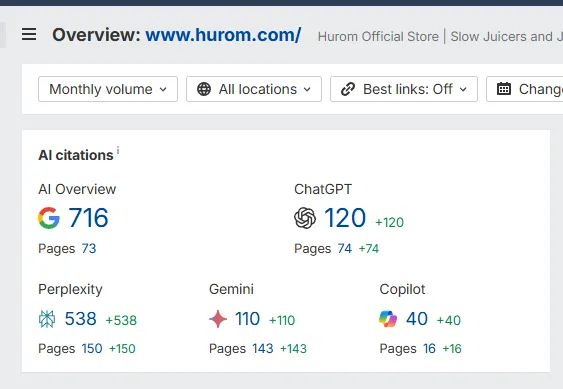
Even our individual pieces (like Hurom’s detox juice recipes post) are now ranking inside AI summaries.

This proves that well-structured content earns visibility beyond traditional SERPs.
P.S. Want to see more success stories? Take a look at our case studies.
How LLMs Are Changing Search and Discovery
Search behavior has moved from keyword matching to meaning recognition. Users now expect direct, conversational answers. That’s exactly what LLMs are trained to provide.
But let’s get deeper:
From Keywords to Context: The New SEO Paradigm
The era of exact-match optimization is over.
Intent now drives visibility. LLMs evaluate the relationships between ideas, not just how words appear on a page.
That changes how authority is built. Single-page optimization no longer cuts it. Now, brands need interconnected content ecosystems; topic clusters that show expertise through depth and internal relevance.
The stronger those connections, the easier it is for AI to read your brand’s authority.
Generative Search Experiences (Google SGE, Perplexity, ChatGPT)
Google’s Search Generative Experience (SGE) and conversational engines like Perplexity or ChatGPT have turned static SERPs into personalized summaries.
Users no longer scroll through ten results. Now, they read an answer that feels confident and complete before they even scroll down to the first link in SERPs.
When your content is cited inside Google’s AI Overviews or referenced within ChatGPT’s responses, your visibility compounds across platforms. All without relying on clicks or paid exposure.
Zero-Click and AI Summarization Impacts
As Semrush also noted in their study, by early 2028, AI search could bring more traffic to websites than traditional engines.
But here’s the flip side: 80% of users rely on AI-powered summaries regularly, and 68% use LLMs for research. For brands, that shift causes a 15–25% drop in organic traffic, even while engagement quality rises.
The takeaway is clear: If your content isn’t designed for AI summarization, you’re invisible to the systems that now shape user discovery.
Content Authority and Source Attribution Challenges
Backlinks still count, but they’re no longer enough.
Authority now depends on structured data, authorship, and transparent sourcing. Those are signals that help AI verify accuracy and trustworthiness.
LLMs prioritize content that demonstrates clear authorship, reputation, and freshness. That’s why E-E-A-T signals, internal linking, and transparent sourcing now play a bigger role than ever.
Brands that clearly define who they are and connect their information across platforms stay visible in AI-generated responses.
Of course, it helps AI algorithms to be cited by authoritative sources. High-quality editorial links are an important signal pointing to your authority.
And that’s one of the things Bluethings can help you with.
It’s how we took Meridian Compensation Partners from position #24 to #1, helping them outrank most major competitors within just 2 years. The website gained 773 new strategic keywords and saw a traffic boost of 1.6K in the US.
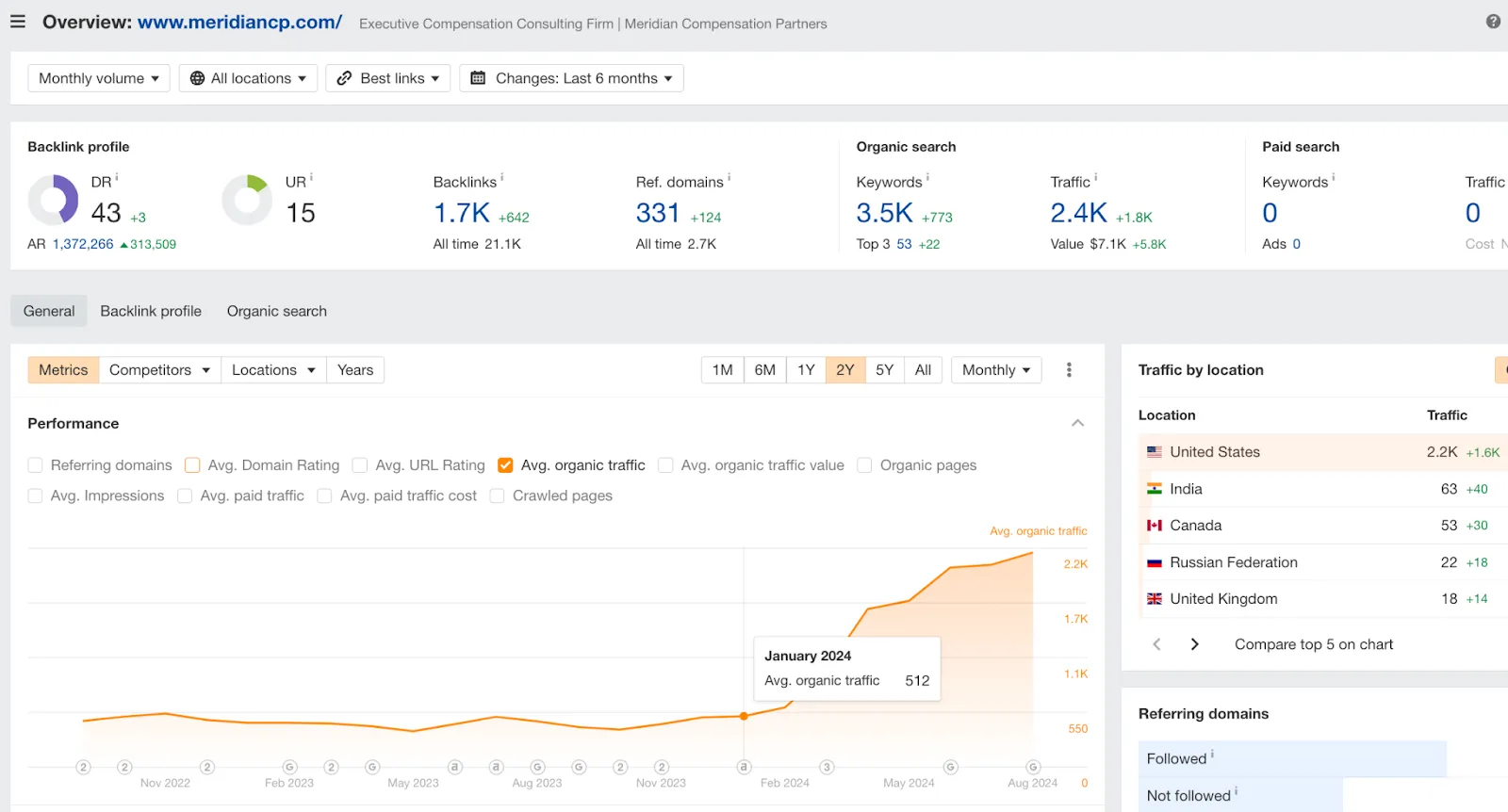
Key Ranking Factors in the LLM SEO Era
Ranking in an AI-first web means proving that your content connects meaning, context, and authority.
Yes, backlinks and meta tags still count, but AI doesn’t care how many times you repeat a phrase. It wants structure, relationships, and reliable signals.
Here’s what matters now:
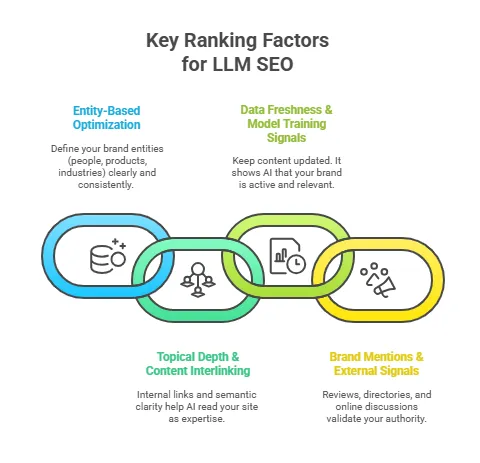
Entity-Based Optimization
In LLM SEO, entities are your anchors. They define who you are, what you offer, and how you connect to everything else in your space.
If your entities are messy, so is your visibility.
Models need clean associations (people, products, industries) to connect your brand to the right topics. Do it right, and AI can recognize you instantly.
Tools like InLinks or Kalicube help map those relationships inside knowledge graphs, but strategy beats software.
You’re defining your brand’s identity in the AI layer. So, make it unmistakable.
Topical Depth and Content Interlinking
One page doesn’t build authority. A network of interlinked, well-structured content does.
AI reads patterns, not isolated pages. When your topics connect, and your content forms a system, models start reading your site as expertise, not noise.
Strong internal linking, consistent terminology, and semantic clarity turn your site into a map of trust. The deeper that map goes, the more often you’ll show up in AI-generated answers.
Pro tip: That’s why we, at Bluethings, build content mind maps for all our clients using Figma and Google Sheets. Here’s a quick preview of how we organize these clusters:

Data Freshness and Model Training Signals
AI learns from what’s current. If your content hasn’t been updated in a year, you’ve already fallen behind its training data.
That means fresh content is a visibility insurance. Updated references, visible timestamps, and new examples tell AI your brand is still active and relevant.
If your data is stale, you’re out of the loop before the next model update drops.
Brand Mentions and External Signals Across the Web
Authority doesn’t live on your site anymore. AI models look everywhere (reviews, directories, social chatter) to decide who’s credible.
That’s why having profiles on Clutch, G2, or even Reddit threads helps AI understand your reputation. Those spaces feed it real-world context: pricing, reviews, case studies, sentiment.
Every consistent mention reinforces your identity. Likewise, every credible listing is another signal that tells AI: this brand’s the real thing.
Need proof of this?
Well, our client Axify shows what strong signals look like in action.

With over 160 citations in Google’s AI Overviews, the brand’s visibility proves how structured data and consistent publishing pay off.
Besides, we also improved Axify’s SEO performance by 175% with strategic link-building and blog content, leading to a 50% monthly rise in clicks.
This is what authority looks like when it’s built for AI-first discovery.
Tools and Technologies for LLM SEO
Precision is what makes LLM SEO work.
You can’t optimize for AI visibility without tools that map entities, surface context, and show how models actually interpret your brand.
Here’s the stack that separates teams who adapt fast from those who fall behind:
Content Intelligence and Optimization Platforms
These tools reveal which topics drive authority and how your content stacks up against everything else online.
- MarketMuse: Audits topical coverage and highlights what to expand or update to strengthen relevance.
- Surfer: Aligns every page with semantic depth, showing how competitors connect ideas and structure content.
- Frase: Pulls real user questions from search and forums to help shape content that answers what people actually ask.
- Clearscope: Refines readability and intent so your writing stays human while signaling authority to AI.
Together, they help you build content ecosystems that read naturally and rank intelligently.
Entity and Knowledge Graph Tools
If your entities are unclear, your brand is invisible.
These tools define what your brand is, what it connects to, and how AI systems perceive it:
- Kalicube: Maps your brand’s entity graph and shows how search engines interpret its relationships.
- InLinks: Automates internal linking and uncovers missing entities across your existing content.
- Schema.org: Provides the markup that makes your information machine-readable and AI-ready.
Beyond improving SEO, they help your brand exist inside the structured web that AI is learning from.
AI-Powered SEO Analytics and Monitoring Tools
Rankings are yesterday’s metric. Now, visibility means tracking how often AI-generated systems surface or cite your content, and understanding what’s driving it.
Here’s where to keep score:
- Semrush AI: Monitors exposure inside AI search experiences and pinpoints growth opportunities.
- Ahrefs GPT integrations: Detect where your content is being summarized or referenced in AI answers.
- Similarweb: Measures traffic coming from AI sources and how users engage with generative interfaces.
Use this data to stay ahead of the curve, refining content before algorithms shift.
P.S.: Most tools look smart on paper, but only a few deliver real AI visibility. We tested and ranked them; see the winners in our list of the best LLM optimization tools.
How to Optimize for LLM SEO Step by Step
LLMs reward brands that define who they are, organize what they know, and present it the same way everywhere.
You’ll build that foundation in layers: identity, depth, and format. Here’s how to do it:
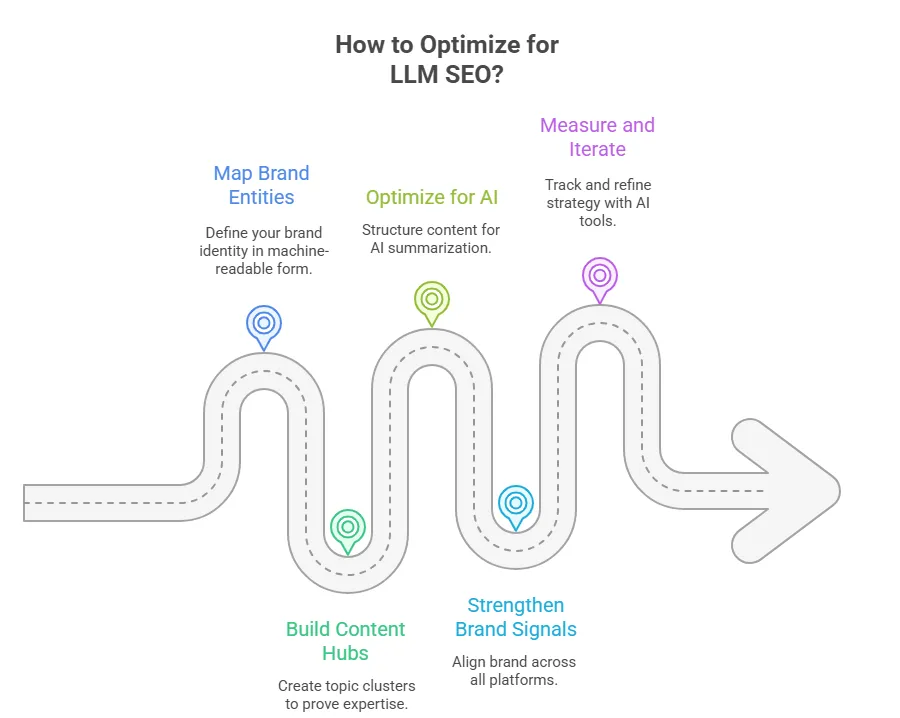
Step 1: Map Your Brand Entities
Entities are your identity in machine-readable form. Name them, scope them, and keep them consistent.
So, define what you own: company, products, services, industries, and expert profiles. Then align those definitions across your site, LinkedIn, business directories, and press. If a title changes in one place and not in others, models notice.
Clean entities make recognition instant. That makes citations easier, and it ends up driving visibility.
Step 2: Build Authoritative Content Hubs
With identity locked, it’s time to prove expertise.
Group related pages into topic hubs that cover a theme from multiple angles: articles, case studies, FAQs, and resources that point to each other with intent.
Also, interlink on purpose and use consistent terminology. Show the progression from fundamentals to advanced use cases. This creates a path models can follow and a signal that the topic lives with you, not on a single post.
Lastly, bring receipts: updated stats, clear sources, screenshots, product examples. Substance helps LLMs summarize you accurately and gives users a reason to trust what they read.
Step 3: Optimize for AI Summarization Engines
AI summarization engines reward structure and clarity. If your content looks like chaos to a human, it’s unreadable to a model.
So, start by writing the way people search. Use H2S and H3S that mirror real queries, not marketing headlines. Keep paragraphs tight, formatting clean, and sections skimmable so AI can pull answers without guessing.
Then, build in an FAQ section that responds to specific user questions. It improves the reading experience and creates structured data that LLMs can extract with confidence.
This is where schema markup does the heavy lifting: it turns plain text into context models that can be understood.
Need an example in action? Here’s one.
Jay Grant, VP of Growth at Webflow, proved how powerful this can be. His team added automated FAQs with schema markup to six core feature pages, and saw a 24 percent lift in SEO impressions and 331 new AI citations.
They used AirOps to pull real questions from People Also Ask, Reddit, and niche forums, filled the gaps with on-brand answers, and converted everything into clean schema markup.
Grant’s test proved a point most teams miss: structure and clarity outperform shortcuts every time.
Step 4: Strengthen Brand Signals and Mentions
AI engines read your reputation the way users do: by checking everywhere you show up.
They cross-reference reviews, bios, directories, and conversations to decide which brands look consistent and trustworthy.
So, start with the basics: keep every public detail aligned. Your company name, descriptions, team titles, and service lists should match across your website, LinkedIn, Clutch, G2, and industry directories. When that information drifts, AI systems start seeing multiple versions of you.
Then go beyond listings. Mentions on Reddit, Slack communities, and niche industry boards tell models that people actually talk about your brand. Each verified review, case study, and pricing profile adds another data point that reinforces reliability.
Consistency here compounds. Every aligned reference becomes a micro-signal that tells AI, “This brand is active, credible, and worth citing.”
Step 5: Measure and Iterate with AI Visibility Tools
You can’t improve what you don’t track. AI-driven visibility shifts as models update, new data enters, and old content fades.
That’s why measurement has to be part of the process.
Use Semrush AI, Ahrefs GPT integrations, and Similarweb to see where your content appears inside AI-generated answers or citation layers.
Review those insights regularly and look for patterns: which topics keep showing up, which pages drop off, and which keywords spark new mentions.
Then, act on it. Update outdated content, tighten entity connections, and expand schema where context is thin.
Brands that treat visibility tracking as an ongoing feedback loop adapt faster and stay present in the spaces where AI now drives discovery.
LLM SEO Challenges (and How Smart Brands Overcome Them)
Optimizing for LLMs opens new ground and new risks.
Visibility now depends on how AI systems interpret your data, evaluate trust, and decide what’s worth summarizing.
Here’s where most brands stumble, and how the smart ones stay ahead:
Data Transparency and Model Bias
AI models learn from imperfect data. When that data skews old, incomplete, or unbalanced, brands can vanish from AI-generated answers altogether.
The fix isn’t complicated: publish consistently, back claims with evidence, and make your expertise public. Detailed case studies, verified stats, and expert bylines give models better material to learn from.
Also, add clear transparency signals (author bios, timestamps, citations), and you help AI validate your credibility.
Measuring Visibility Beyond Traditional Rankings
LLM traffic doesn’t look like organic clicks. It’s measured in mentions, citations, and references, not positions.
A SEMrush case study showed that nearly 90% of ChatGPT citations come from pages ranking beyond position 20 on Google. That shift proves one thing: visibility now lives outside the top five search results.
To measure success in this environment, marketers now use AI visibility analytics that track mentions, references, and citations across models.
These insights reveal an influence that traditional SEO dashboards can’t detect.
Content Ownership and Source Attribution
When AI summarizes, credit can disappear. Your data might shape an answer without your name attached.
To close that gap, strengthen your structured data. Use schema for author names, organization info, and publication details so AI can trace content back to you.
Also, regularly monitor where your content appears in AI responses. And when it’s reused without attribution, address it through partnerships or direct agreements.
Balancing Human Creativity with AI Optimization
AI can scale information, but it can’t replicate originality. Brands that rely only on optimization end up sounding identical.
The strongest strategies blend structure with creativity: data that models can read, and stories that people want to.
That combination keeps your content both algorithmically relevant and emotionally real. And that’s where true authority lives.
Need an example?
Well, here’s one: Our client inBeat proved what consistent LLM SEO execution delivers.
The agency’s content now earns citations across ChatGPT, Gemini, Perplexity, and Google AI Overviews. All built on clear structure, entity precision, and distribution discipline.
This is the same framework we apply at Bluethings to help all brands win in AI-driven search.
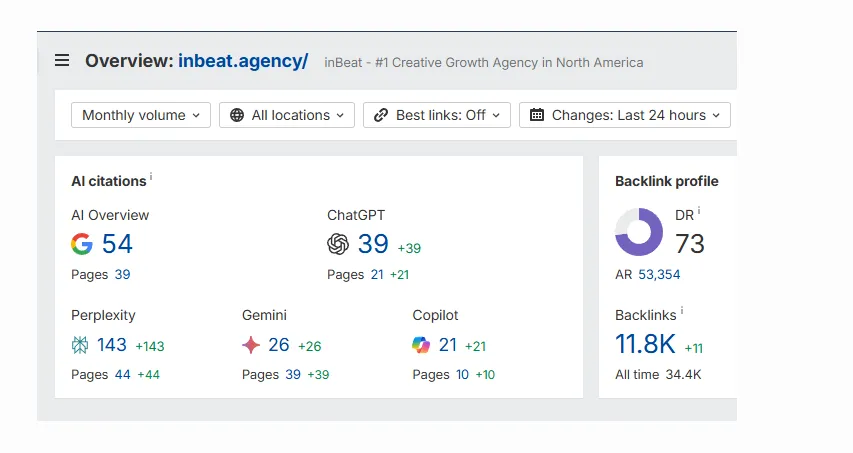
Stay Visible in the Age of AI Search with Bluethings
As you can see, search has changed. LLMs now decide which voices get amplified, and they reward clarity, structure, and trust above everything else.
LLM SEO goes beyond being another technical layer. Actually, it’s how your brand earns credibility in the AI ecosystem, where answers replace rankings and authority is built on recognition.
Brands that adapt now will shape how AI defines their category. Those who wait will let the algorithms decide for them.
At Bluethings, we build SEO strategies built for how AI actually works. If you’re ready to move past outdated tactics and start leading in LLM-driven search, let’s talk!
FAQs
Which LLM is best for SEO?
There’s no single winner. ChatGPT and Google Gemini lead in conversational answers, while Perplexity and Claude dominate summarization and accuracy.
The smart move isn’t betting on one engine. What matters is making your content readable, factual, and structured enough that all of them (and their underlying search algorithms) can use it.
What is LLMs.txt in SEO?
Think of LLMs.txt as the next evolution of robots.txt — a file that tells AI bots what they can access or train on.
It’s still emerging, but it gives brands a way to control how their data is used in generative AI systems. Expect this to become standard practice fast.
How can Large Language Models improve SEO strategies?
LLMs reveal how search queries are interpreted through natural language processing, exposing what algorithms understand and what they miss. You can spot gaps in entities, weak context, or unclear intent by studying AI-generated answers,
Fix those, and your strategy becomes sharper, faster, and aligned with real user expectations.
How does traditional SEO differ from SEO enhanced by LLMs?
Traditional SEO chases rankings. Meanwhile, LLM SEO builds understanding.
Instead of optimizing for position, you optimize for clarity, relationships, and structure. These factors improve user experience and help AI summarize your brand accurately.
What challenges or limitations exist when applying LLMs to SEO?
Visibility is still hard to measure. AI engines don’t always show their sources, so tracking where and how you’re cited takes new AI tools and careful analysis.
Bias in training data can also distort perception. The fix? Solid schema markup, strong authorship signals, and frequent updates that reinforce credibility.
Will LLM SEO replace traditional SEO entirely?
No, and it shouldn’t. Traditional SEO builds the foundation that lets generative AI systems crawl, learn, and interpret your content. LLM SEO expands that visibility into AI summaries, chat answers, and recommendation layers, all while keeping your brand relevant as search trends evolve.
Together, they define how your brand gets seen by both algorithms and audiences.

